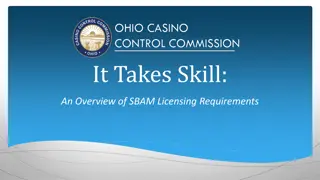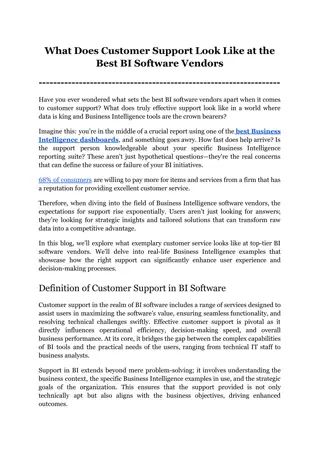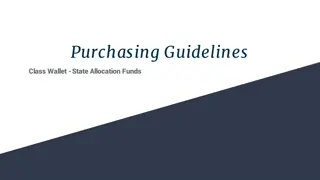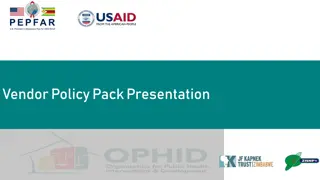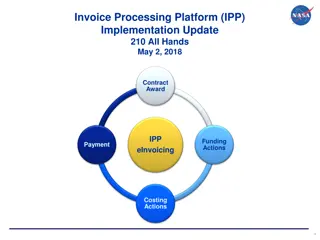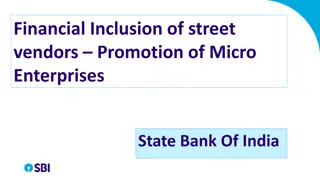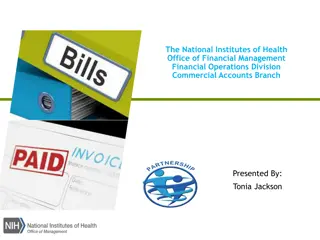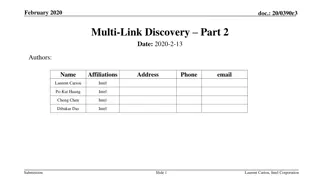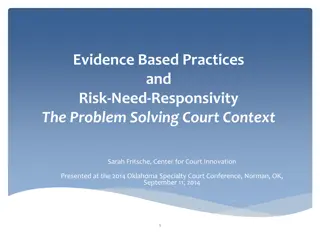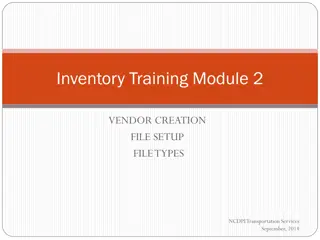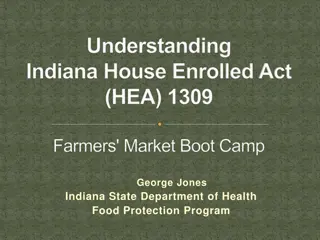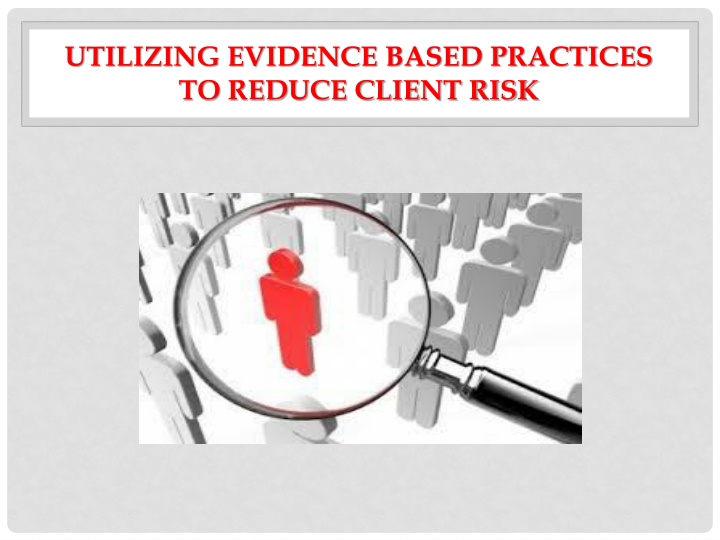
Reducing Client Risk through Evidence-Based Practices
Explore the Risk Need Responsivity (RNR) Model and effective intervention principles to reduce client risk. Assess the effectiveness of community supervision in achieving its goals. Dive into statistics on recidivism rates among released prisoners and comparisons between community supervision and alternative sanctions. Understand the RNR Model's Risk, Need, and Responsivity principles, with potential to influence criminal behavior.
Download Presentation

Please find below an Image/Link to download the presentation.
The content on the website is provided AS IS for your information and personal use only. It may not be sold, licensed, or shared on other websites without obtaining consent from the author. If you encounter any issues during the download, it is possible that the publisher has removed the file from their server.
You are allowed to download the files provided on this website for personal or commercial use, subject to the condition that they are used lawfully. All files are the property of their respective owners.
The content on the website is provided AS IS for your information and personal use only. It may not be sold, licensed, or shared on other websites without obtaining consent from the author.
E N D
Presentation Transcript
UTILIZING EVIDENCE BASED PRACTICES TO REDUCE CLIENT RISK
OBJECTIVE *Introduce the Risk Need Responsivity (RNR) Model and principles of effective interventions.
HOW AFFECTIVE HAS COMMUNITY SUPERVISION BEEN? What are the goals of community supervision? How are we doing in accomplishing those goals?
COMMUNITY SUPERVISION The Bureau of Justice Statistics tracked recidivism for 404,000 prisoners released from state prison (30 states) in 2005 for three and five year periods. It was determined 67.8% of prisoners were arrested for a new crime within three years and 76.6% were arrested within five years. Alexia D. Cooper, Ph.D., Matthew R. Durose, Howard N. Snyder, Ph.D.
COMMUNITY SUPERVISION A review of 15 studies that compared some form of community supervision with an alternative criminal sanction (e.g., prison sentence, fine), found recidivism was points lower on average for offenders under community supervision. There was no decrease in violent recidivism associated with community supervision. only two percentage James Bonta, et al. (2008)
The RNR Model Risk Principle Need Principle Responsivity Principle The RNR model seeks an understanding that offers the potential not only to forecast criminal events but to influence the chances of criminal acts occurring through deliberate intervention. (Andrews & Bonta 2010) *Up to 35% reductions in recidivism when implemented in certain settings (Bonta & Andrews, 2007)
RISK PRINCIPLE Allocate time and resources to higher risk offenders, as their exposure to appropriate interventions and services actively reduces risk. Conversely, interventions have on low risk offenders is generally insignificant aggravates risk. the impact services and and potentially
NEEDS PRINCIPLE: TARGETING WHAT MATTERS
NEEDS PRINCIPLE Interventions are most effective when they target criminogenic needs (changeable). 1.Cognitions 2.Social Networks 3.Personality 4.Family/Marital factors 5.Education/Employment 6.Leisure/Recreation 7.Substance abuse
RESPONSIVITY PRINCIPLE: CREATING AN ENVIRONMENT CONDUCIVE TO POSITIVE CHANGE
RESPONSIVITY PRINCIPLE General: Cognitive behavioral and other structured skill building Specific: Stage of change (i.e., Pre- contemplation, Contemplation, Preparation, Action, Maintenance), gender, age mental health, cognitive skill level, cultural considerations etc
POST CONVICTION RISK ASSESSMENT (PCRA) Designed to identify dynamic risk factors pertaining to each individual (e.g., Education and Employment, Substance Abuse, Social Networks, Cognitions) Contains an 80-item self-report questionnaire that assesses criminal thinking Scoring results in individuals being placed in one of four risk categories: High, Moderate, Low/Moderate, Low Research indicates the tool is a reliable and valid assessment of risk
MONTHLY TREATMENT REPORTS Here is what we are looking for: 1. Treatment focus should be rooted in DRFs (i.e., cognitions, social net, alcohol/drugs, edu/employ) 2. MTR should provide details about progress in criminogenic areas. 3. Treatment plan should account for client risk. Not a one size fits all approach. 4. Avoid canned language and provide information specific to client s treatment status. 5. Evidence of escalated threat of violence should be staffed immediately with assigned USPO.


